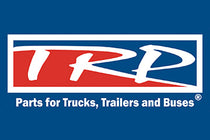Best Practices for Icy Roads and Snow

At Ohio Peterbilt, we know that winter driving can be challenging for truck drivers. Icy roads, heavy snow, and freezing temperatures increase risks for both drivers and fleets. Safety isn’t just about protecting your truck; it’s about protecting yourself, your cargo, and everyone else on the road.
How Snow Impacts Road Safety
Snow can drastically change driving conditions:
• Reduced Traction – Compacted snow creates slick surfaces, making it harder to steer, accelerate, and brake.
• Lower Visibility – Heavy snowfall can obscure lane markings and other vehicles, increasing the risk of collisions.
• Hidden Hazards – Snow can conceal ice patches, potholes, and debris, so always drive cautiously.
How Cold Temperatures Affect Truck Performance
Freezing temperatures can strain your truck:
• Battery Power Loss – Cold weather reduces battery efficiency, making starts harder.
• Thicker Engine Oil – Oil thickens in low temperatures, reducing lubrication and increasing engine wear.
• Tire Pressure Drops – Cold air lowers tire pressure, reducing traction and control.
Essential Winter Driving Tips
-
Inspect Before You Roll
Before hitting the road, perform a thorough inspection:
• Check tire tread and pressure – Proper traction is critical on icy surfaces.
• Inspect brakes – Ensure they’re responsive and free of moisture.
• Verify lights and signals – Visibility is reduced in winter.
• Top off fluids – Antifreeze, windshield washer fluid, and fuel additives are a must.
Tip: Take advantage of Ohio Peterbilt’s truck maintenance services, including tire checks, brake inspections, and fluid top-offs, to keep your truck winter-ready.
2. Slow Down and Increase Following Distance
Winter roads demand patience
Winter roads require a more cautious approach. Reduce your speed to maintain better control when conditions are slick and allow yourself additional space between your truck and the vehicle ahead. This extra room gives you time to react to sudden stops or changes in traffic.
3. Use Engine Braking Wisely
On icy roads, avoid aggressive braking
On icy roads, hard braking is a quick way to lose control. Instead, ease up and let your engine help. Use engine braking on downgrades to maintain traction, and when you do brake, apply gentle, steady pressure.
Plan ahead for stops, start slowing down early so you’re not forced into sudden braking. If you’re hauling a heavy load, remember it takes longer to stop, so give yourself extra space and time.
4. Watch for Black Ice
Black ice is nearly invisible but extremely dangerous
Black ice is nearly invisible but extremely dangerous. It commonly forms on bridges, overpasses, and shaded areas. If you hit black ice, don’t panic, ease off the accelerator and steer gently.
5. Keep Emergency Supplies Onboard
Keeping an emergency kit in your truck is essential in case of bad conditions or roadside breakdowns. Prepare for the unexpected by including:
• Warm clothing and blankets
• Non-perishable food and water
• Flashlight and extra batteries
• Tire chains and traction aids
• First-aid kit
Tip: If you break down, our Mobile Service can come to you for on-site repairs, keeping you safe and minimizing downtime.
6. Plan Ahead
Check weather forecasts and road conditions before departure. Allow extra time for delays because rushing increases risk. Use GPS and telematics for route optimization and safety alerts.
Ohio Peterbilt Can Help
Need winter truck maintenance, tire upgrades, or emergency roadside service? Our team is ready to keep your truck road-ready this Winter season.





